Temperament, Environment, and the Formation of Emotional Regulation.
“Invalidation doesn’t teach control. It teaches shame.”—Joseph Mounts
Introduction
Our ability to regulate emotion is not purely a matter of willpower or personality—it develops through ongoing interaction with our environment. As Thomas and Chess (1985) demonstrated in their landmark research on temperament, some children are naturally more reactive, less adaptable, and prone to intense mood expression. When this kind of temperament meets an environment unable or unwilling to respond appropriately, emotional development can be disrupted, setting the stage for chronic dysregulation later in life.
Such mismatches between temperament and environment can lead to what Marsha Linehan (1993) termed an invalidating environment: a family or social context in which emotional expression is discouraged, trivialized, or punished. Within these systems, children fail to learn that their inner experiences are valid, meaningful, and capable of being regulated.
The Invalidating Environment
Invalidation occurs when emotional or cognitive experiences are dismissed as exaggerated, inappropriate, or wrong. The message—explicit or implied—is “You shouldn’t feel that way.” Over time, this teaches the child to doubt their own perceptions and emotions, replacing internal trust with external dependence. From a Jungian perspective, this process mirrors the formation of the shadow—those aspects of the psyche repressed or denied because they are deemed unacceptable by the environment (Jung, 1959)
The result is not simply emotional suppression but the internalization of the belief that one’s inner world is unreliable. The child learns to look outward for cues about how to think, feel, and behave, gradually losing connection with their authentic self.
While invalidation can occur in any context, it is most powerfully learned within the family system—the child’s first emotional laboratory. Marsha Linehan (1993) identified several recurring patterns of family interaction that teach children to distrust or suppress their inner experiences. These family systems differ in surface structure but share the same underlying message: your emotional experience is wrong or unacceptable.
Types of Invalidating Families
1. The Chaotic Family
Instability defines the chaotic family. Parents may struggle with substance use, financial stress, or prolonged absences from the home, leaving little consistency or predictability for the child. When present, caregivers may be volatile, reactive, or neglectful. Emotional needs are ignored or punished, and the child learns that their feelings have no stable or safe place in the family system.
This dynamic parallels what attachment theorists describe as a lack of a facilitating environment (Winnicott, 1965). Without sufficient attunement, the child’s developing sense of emotional security is compromised, fostering confusion and hypervigilance rather than trust.
2. The Perfect Family
In the perfect family, emotional control is idolized. Parents cannot tolerate negative emotion—often due to exhaustion, rigid expectations, or fears of “spoiling” the child. Common statements such as “Stop crying or I’ll give you something to cry about” illustrate the authoritarian tone of these homes.
Children here are told to control their emotions without ever being taught how. Emotional suppression becomes the rule, but this inevitably gives way to periodic emotional collapse. The child learns to swing between poles of inhibition and eruption—calm on the surface, chaos underneath. Because only extreme displays provoke attention or comfort, the environment unintentionally reinforces the very dysregulation it condemns (Linehan, 1993).
Over time, this dynamic undermines the child’s ability to name, understand, or tolerate emotions. As Fonagy, Gergely, Jurist, and Target (2002) note, such failures of emotional mirroring impair mentalization—the capacity to understand one’s own and others’ mental states—leaving the person vulnerable to impulsivity, emptiness, and relational instability.
3. The Typical Family
Linehan (1993) also described the typical family—sometimes referred to as the “American way syndrome.” These families reflect a more culturally subtle but pervasive form of invalidation rooted in Western ideals of autonomy and mastery. They emphasize cognitive control and achievement over emotional expression.
In this context, reason is exalted and emotion is pathologized. Stoicism, independence, and productivity are celebrated, while vulnerability is viewed as weakness. For individuals with emotionally reactive temperaments, this can create deep shame and alienation. The underlying message is clear: to be accepted, you must be logical, composed, and in control.
Although such environments may foster resilience in some, they can severely harm those who require relational attunement to learn emotional regulation. As Winnicott (1965) and later Linehan (1993) both emphasized, even the appearance of normalcy can mask developmental deficits in emotional awareness and validation.
The Reinforcement of Emotional Extremes
Invalidating environments do not simply neglect emotional needs—they actively shape the learning process around emotion. In behavioral terms, the child’s emotional expression becomes governed by a set of reinforcement contingencies that reward extremes and punish moderation. When a child expresses mild sadness, frustration, or fear and is met with ridicule, dismissal, or withdrawal, that emotional expression is extinguished. But when that same child escalates to crying, yelling, or self-destructive behavior—and finally receives attention, comfort, or acknowledgment—the pattern of intermittent reinforcement is established.
From a behavioral learning perspective, intermittent reinforcement is one of the most powerful conditioning mechanisms (Skinner, 1953). Because validation is unpredictable and only occurs at the height of emotional arousal, the child’s nervous system begins to associate intensity with connection. Over time, this conditioning teaches the child that calm communication is ineffective, while emotional escalation is the only way to be seen or soothed.
This process trains the individual to oscillate between two maladaptive poles: emotional inhibition and emotional explosion (Linehan, 1993). During inhibition, emotions are suppressed or denied to maintain external stability; during explosion, they burst forth uncontrollably when suppression fails. Both states are reinforced by the social environment—either through avoidance of punishment (inhibition) or through the occasional relief of being noticed (explosion).
Neurobiologically, this dynamic also reflects the body’s learning history. Chronic invalidation heightens arousal in the limbic system while failing to strengthen the prefrontal capacities necessary for regulation (Schore, 2012). The emotional brain becomes conditioned to expect relational disconnection unless intensity is achieved, perpetuating both physiological and relational dysregulation.
Over time, this conditioning erodes self-trust. The individual ceases to rely on internal emotional cues, instead scanning the environment for signals about how to feel or act. As Linehan (1993) observed, a minimal level of self-trust is essential for psychological coherence—even if one must trust the decision not to trust oneself. When self-trust collapses entirely, the person becomes dependent on external feedback for identity and emotional direction.
This developmental trajectory underlies what Linehan described as the borderline dilemma: the individual is unable to escape the invalidating environment but also lacks the emotional and behavioral skills needed to adapt to it. The result is a pattern of volatile relationships, rapid mood shifts, and chronic feelings of emptiness or confusion—symptoms that emerge not from inherent pathology but from the painful logic of learned emotional survival.
Therapeutic Implications
Dialectical Behavior Therapy (DBT) directly addresses the emotional skill deficits created by invalidating environments, teaching the capacities that were never modeled in early life. Through mindfulness, distress tolerance, emotional labeling, and interpersonal effectiveness, DBT provides a structured framework for developing the emotional literacy and regulation strategies that chaotic or perfectionistic environments often fail to cultivate (Linehan, 1993).
The cornerstone of this work is validation. Linehan (1993) emphasized that validation does not mean simple agreement, but recognition that one’s internal experience makes sense given personal history and context. For many clients, this is a radically new experience: to have emotion met with understanding rather than judgment. Validation becomes a corrective emotional experience—a lived counterexample to the early learning that feeling leads to punishment or abandonment.
Consistent validation also reshapes the nervous system’s implicit memory. Repeated experiences of empathic attunement activate the brain’s social engagement systems and strengthen prefrontal modulation of affective arousal (Schore, 2012). Over time, clients internalize the therapist’s calm, reflective stance, learning that emotions can be expressed, explored, and survived. This process of co-regulation gradually transitions into self-regulation, restoring the capacity for inner trust that invalidation once dismantled.
From a developmental lens, this transformation parallels Winnicott’s (1965) facilitating environment and the process of earned secure attachment described by Siegel (2012). The therapeutic relationship functions as a “good-enough” environment: one where the client’s emotional world is reflected accurately and held with compassion. In this space, dysregulation is not shamed but understood as a learned adaptation to inconsistency, and new relational templates are formed through the therapist’s reliable presence.
Therapeutically, DBT and related integrative models also target the behavioral learning contingencies that once reinforced emotional extremes. Clients practice identifying triggers, tracking escalation patterns, and applying new behaviors before crisis thresholds are reached. Each success begins to rewire the old contingency system, teaching that moderate, articulate expressions of emotion can indeed elicit care and connection.
Beyond behavioral skill acquisition, therapy addresses the deeper identity disruptions born from chronic invalidation. Clients are supported in differentiating between adaptive emotional strategies once needed for survival and their authentic emotional self. This is, in essence, the work of individuation (Jung, 1959)—integrating, as noted above, disowned, shadowed aspects of the psyche into a coherent whole. When clients recognize that their intense emotions were once protective and meaningful, shame begins to dissolve, replaced by self-compassion.
The ultimate aim of therapy is not to eliminate emotional intensity but to integrate it—to transform sensitivity into insight, empathy, and creative vitality. As clients internalize the validating stance of the therapist, they cultivate self-validation, the capacity to affirm their own inner truth without external approval. In this way, therapy becomes a re-parenting process: it recreates the environment that should have existed in childhood and equips the adult self to become that environment internally.
Healing, therefore, is not the absence of emotion but the recovery of relationship—to self, to others, and to one’s emotional life. As Winnicott (1965) observed, the good-enough environment does not prevent distress but provides a stable frame through which distress can become meaningful. Within that frame, the client learns the deepest truth of all: that feeling deeply is not a flaw—it is the beginning of wholeness.
—Joseph Mounts M.Ed., AADC, LPC#2440
References
Fonagy, P., Gergely, G., Jurist, E. L., & Target, M. (2002). Affect regulation, mentalization, and the development of the self. New York, NY: Other Press.
Jung, C. G. (1959). Aion: Researches into the phenomenology of the self (R. F. C. Hull, Trans.). Princeton, NJ: Princeton University Press. (Original work published 1951)
Linehan, M. M. (1993). Cognitive-behavioral treatment of borderline personality disorder. New York, NY: Guilford Press.
Schore, A. N. (2012). The science of the art of psychotherapy. New York, NY: W. W. Norton & Company.
Siegel, D. J. (2012). The developing mind: How relationships and the brain interact to shape who we are (2nd ed.). New York, NY: Guilford Press.
Skinner, B. F. (1953). Science and human behavior. New York, NY: Macmillan.
Thomas, A., & Chess, S. (1985). Temperament and follow-up to adulthood. In J. Strelau & A. Angleitner (Eds.), Explorations in temperament: International perspectives on theory and measurement (pp. 255–263). New York, NY: Plenum Press.
Winnicott, D. W. (1965). The maturational processes and the facilitating environment: Studies in the theory of emotional development. London: Hogarth Press.


